Sectioned Model Case¶
A sectioned model is a plaster model from which the prepared tooth can be removed.
Create the Order¶
Note
- Select Restoration as the dentistry type.
- Select Patient Mode.
- Select Sectioned Model.
- Select Occlusion Type according to the reality.
More details can be found in Scan Strategy Configuration.
Click Scan to start or click Save to save the order and scan it later.
After saving the order, click Explore to check the storage location.

Start Scanning¶
The lower jaw is the working jaw, and the upper jaw is the opposing jaw in this order.
 Total Jaw Scan¶
Total Jaw Scan¶
- Place the height adaptor, the fixture, and the model.
- Set the configuration in the camera window. For steps to set parameters, see Parameters.
-
(Optional) Switch on additional functions. For more, see Function.
: Add scanning paths and process a multi-angle scan. It is enabled by default when scanning the total jaw.
: Add details and process a high-quality scan. For more, see Function.
Col
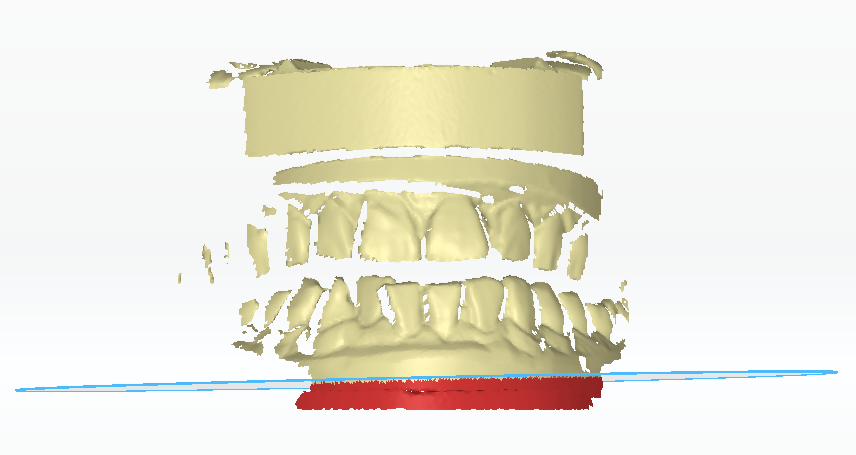
Turn off
Col
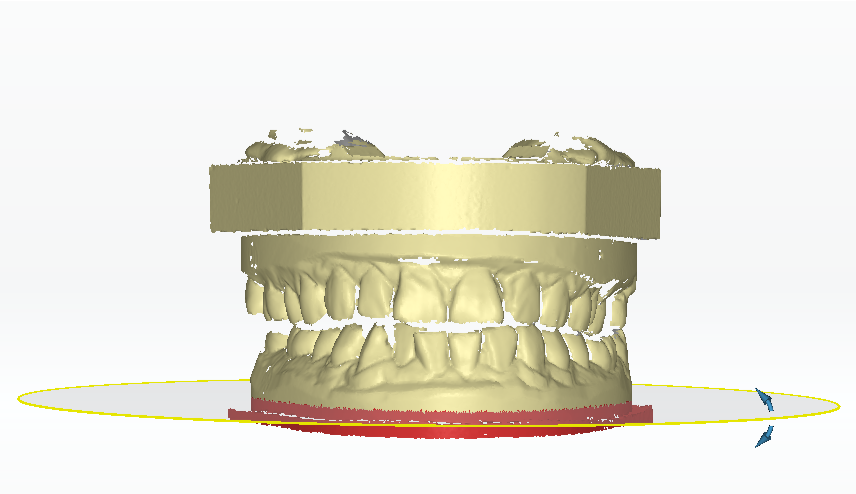
Turn on
-
Click
or press Space / Enter to start scanning.
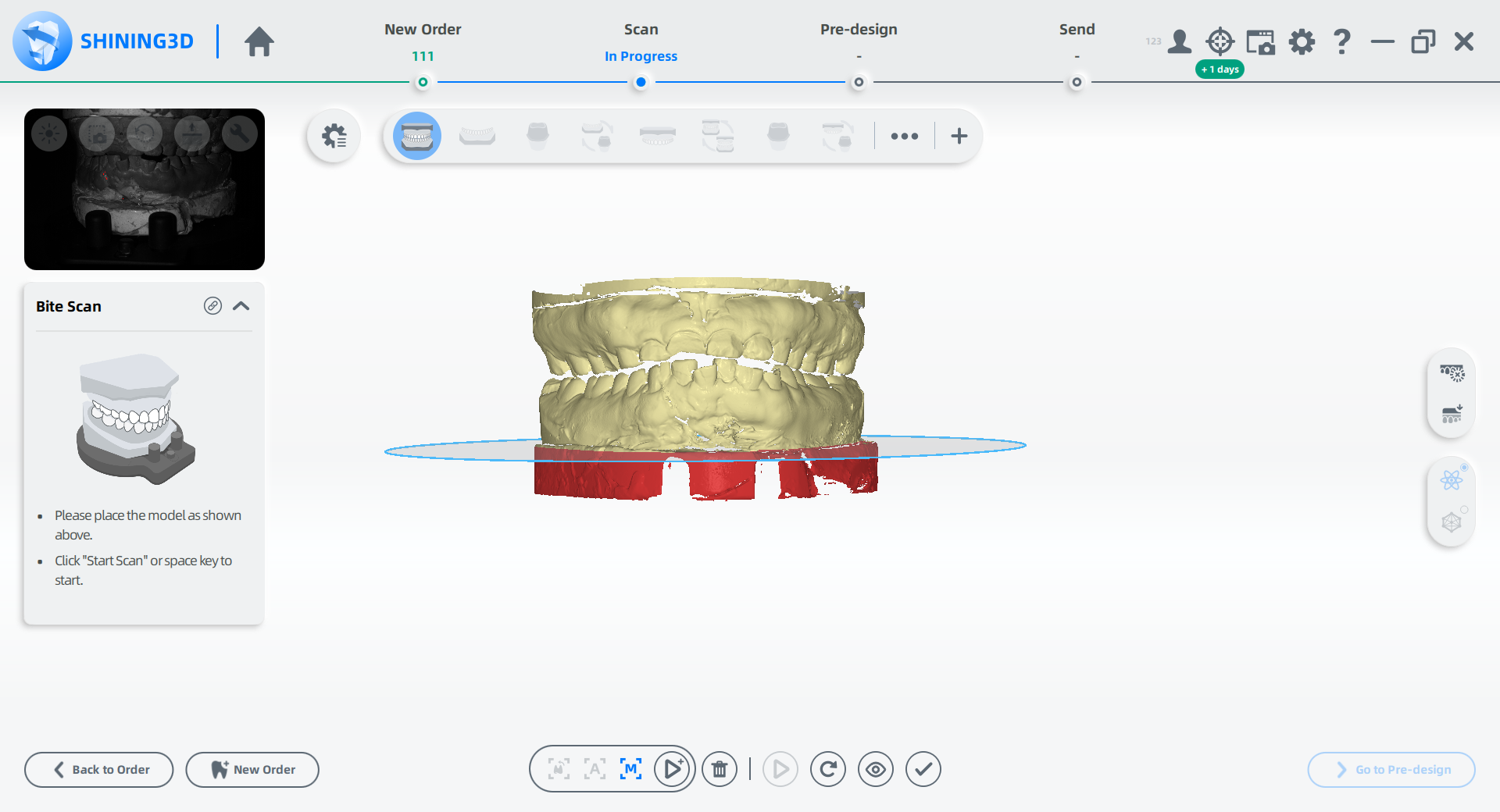
-
After scanning, move or rotate the cutting plane to cut the model.
-
Move the cutting plane: Within the cutting plane, press and hold the left mouse button and move the cursor up and down to adjust the cutting height. The area to be deleted is in red.
-
Rotate the cutting plane: Move the cursor to the edge of the cutting plane until the edge of the cutting plane turns yellow and a blue arrow appears. At this time, press and hold the left mouse button and move the cursor to rotate the cutting plane. The area to be deleted is in red.
Col

Move Cutting PlaneCol
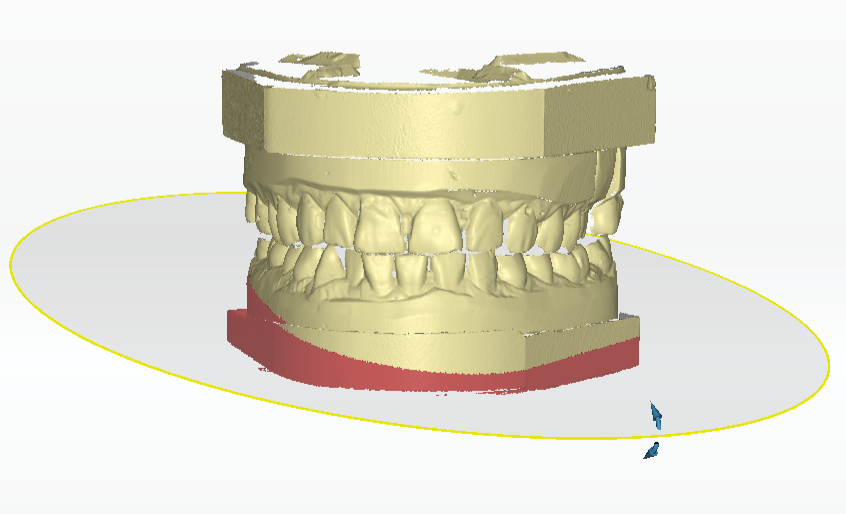
Rotate Cutting Plane -
-
Click
to edit the model, see Function.
- Click
to save the edit and return to the scanning interface.
- Click
to preview the scanned model; or click
to rescan; or click
to finish the scanning step.
 Lower Jaw Scan¶
Lower Jaw Scan¶
- Follow the guidance on the interface to place the model.
- Click
or press Space / Enter to start scanning.
- If the scanned data is incomplete, click
to add more data to the existing scan. For steps to add scan, see Add Scan.
- After scanning, cut and edit the scanned data for a cleaner scan.
- Click
to finish.

 Die Scan - Lower Jaw¶
Die Scan - Lower Jaw¶
- Place the model as shown.
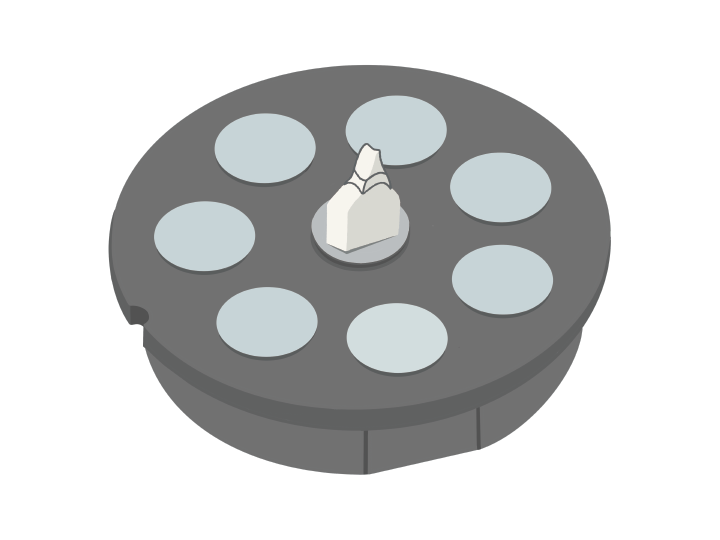
- Set the configuration in the camera window. For steps to set parameters, see Parameters.
-
(Optional) Switch on additional functions. For more, see Function.
Note
: Acquire the abutment data.
: Improve the accuracy of data for scanning unsectioned tooth models.
-
Click
or press Space / Enter to start scanning. For scanning in groups, see group scan.
- After scanning, cut and edit the scanned data for a cleaner scan.
-
Click
to finish.
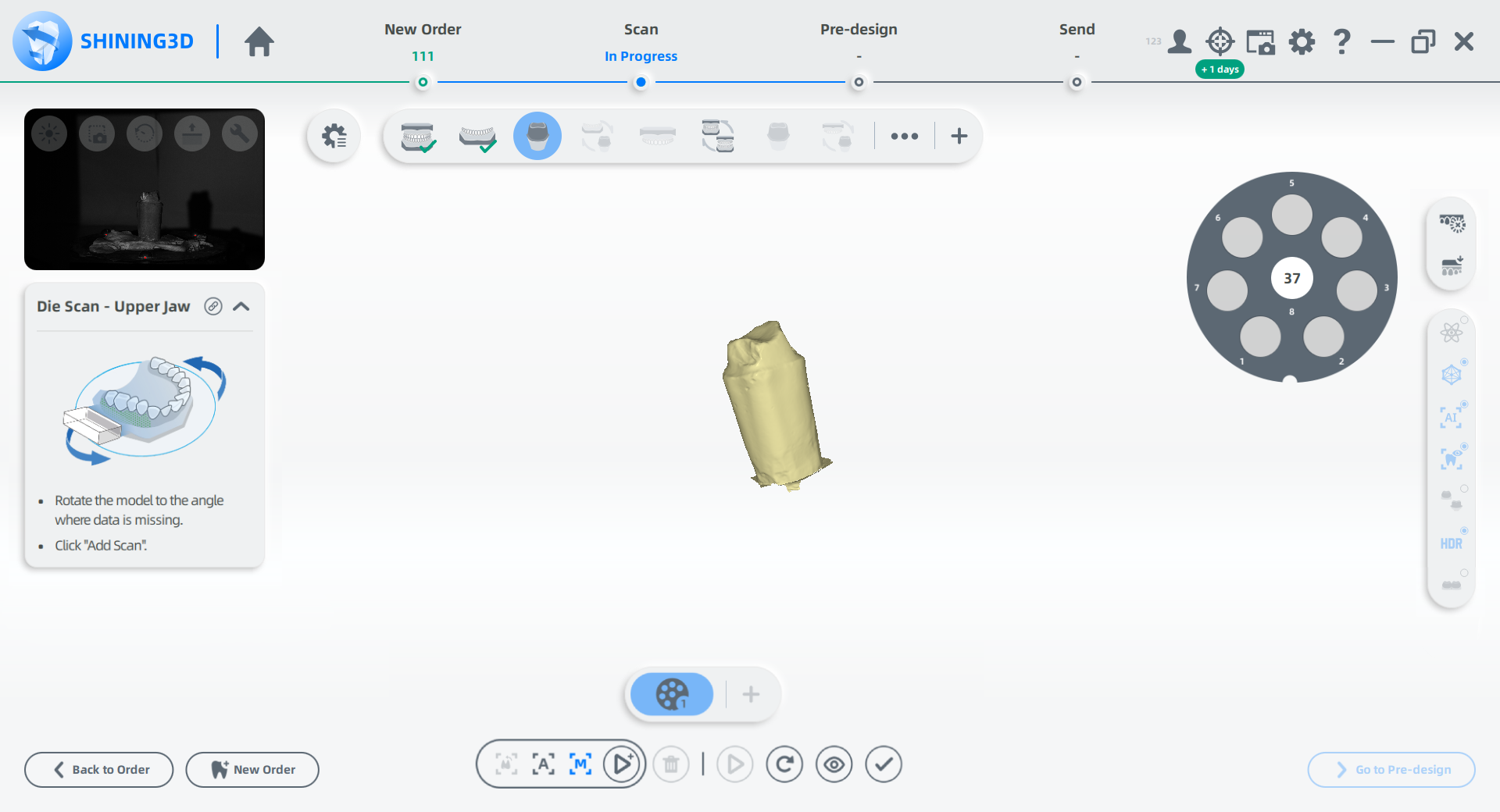
 Die Alignment - Lower Jaw¶
Die Alignment - Lower Jaw¶
- Check the automatic alignment and click
to finish.
- (Optional) If the result is not optimal, click
and align the scanned data manually. For steps to align, see Alignment Operation.
 Upper Jaw Scan¶
Upper Jaw Scan¶
- Follow the guidance on the interface to place the model.
-
Click
or press Space / Enter to start scanning.
-
If the scanned data is incomplete, click
to add more data to the existing scan. For details, see Add Scan.
- After scanning, cut and edit the scanned data for a cleaner scan.
-
Click
to finish.
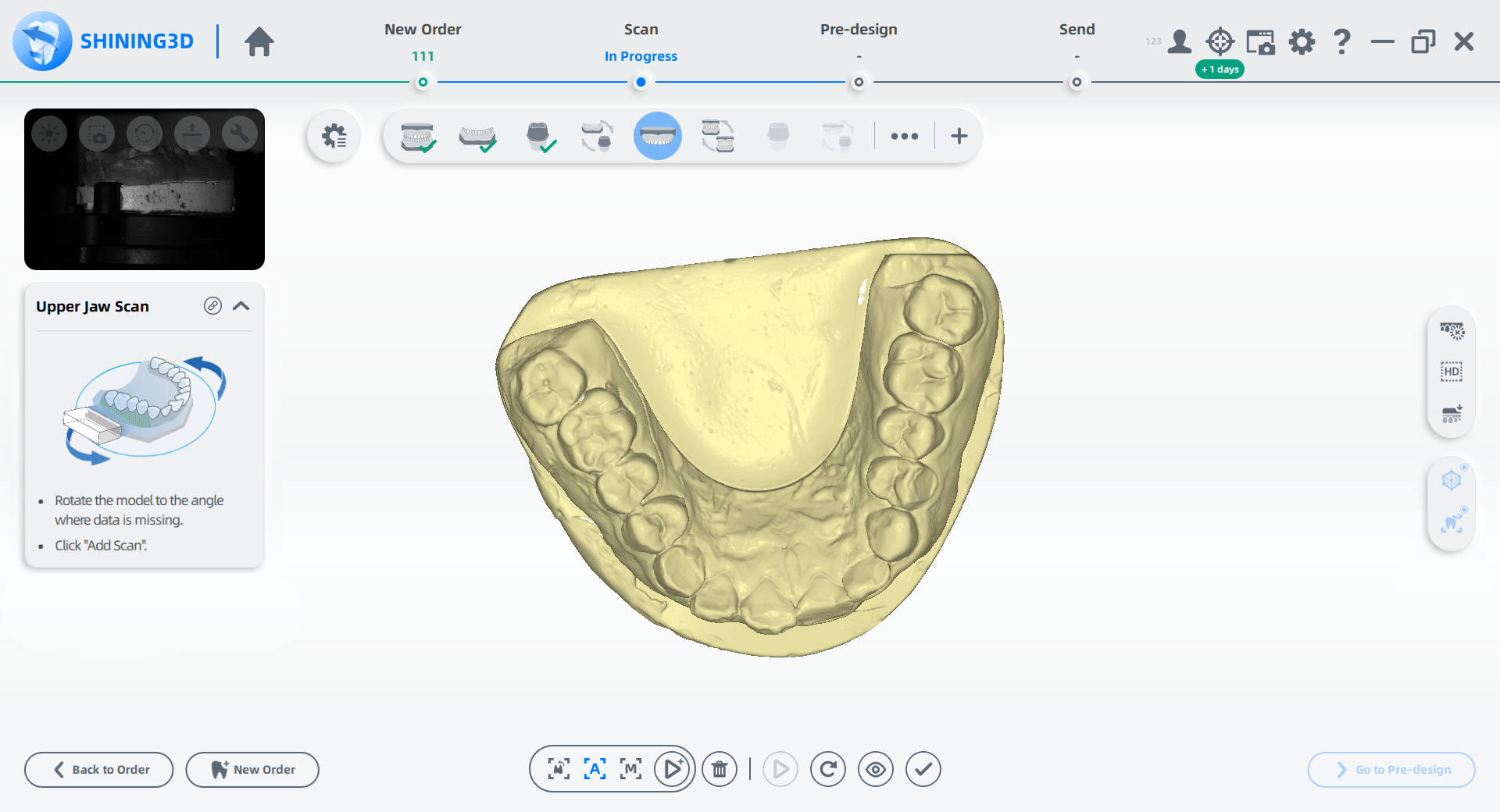
 Occlusion Alignment¶
Occlusion Alignment¶
- Check the automatic alignment and click
to finish.
- If the result is not optimal, click
and align the scanned data manually. For steps to align, see Alignment Operation.
Note
According to the specific needs, you can enable or cancel the bite optimization (highlighted in red). Once enabled, it will automatically adjust and optimize occlusion data.

Finish Scanning¶
After finishing the scanning process, click on Go to Pre-design to edit the scanned data.